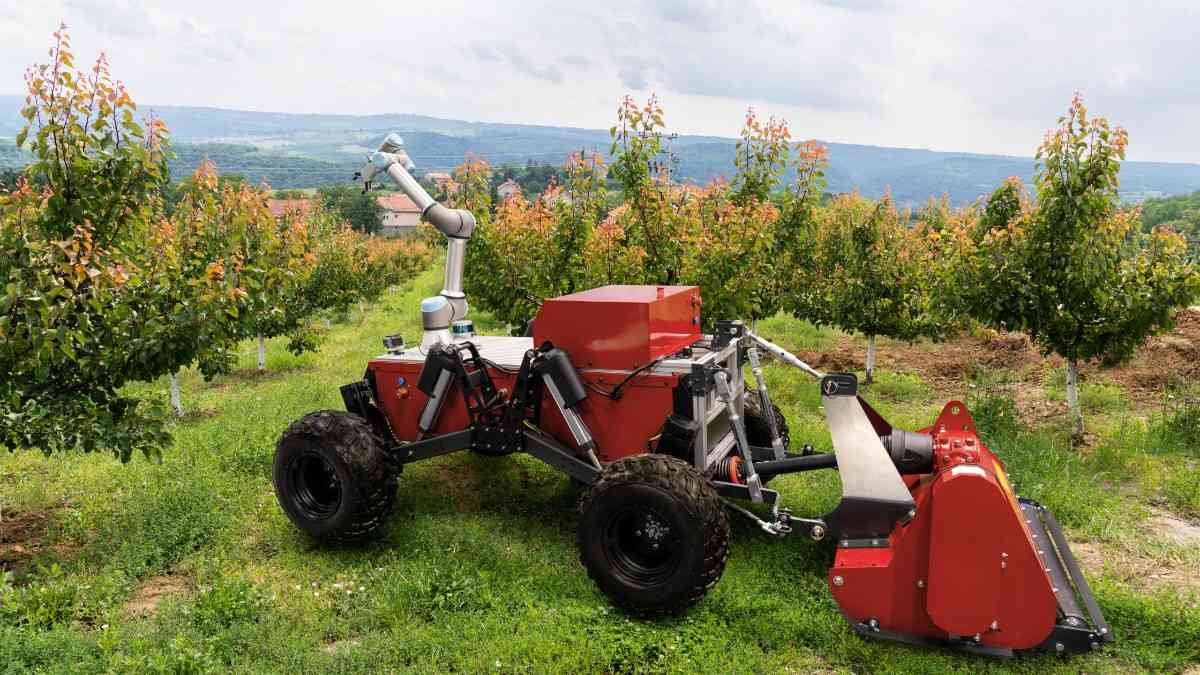Agriculture has been the foundation of human society for thousands of years, changing over time from simple methods to the high-tech ones we use today. With the world’s population continuing to rise and food demand rising, the agricultural sector is under tremendous pressure to produce more with less resources.
A game-changing solution in the field, agricultural robots has emerged as a result of this problem driving innovation. With its capacity to provide more intelligent, effective, and sustainable agricultural methods, robotics in agriculture is the way of the future.
The Rise of Robotics in Agriculture
Technological developments have transformed many sectors in recent years, and agriculture is no exception. Agricultural robots have revolutionized conventional farming practices, allowing farmers to limit environmental effects, boost output, and save labor expenses.
These clever machines can do a lot of jobs, such as planting and harvesting as well as controlling livestock and keeping an eye on the condition of the crops.
With the globe having to deal with both climate change and the difficulty of feeding an expanding population, farming with robotics is becoming more intelligent.
The Role of Robotics in Modern Farming
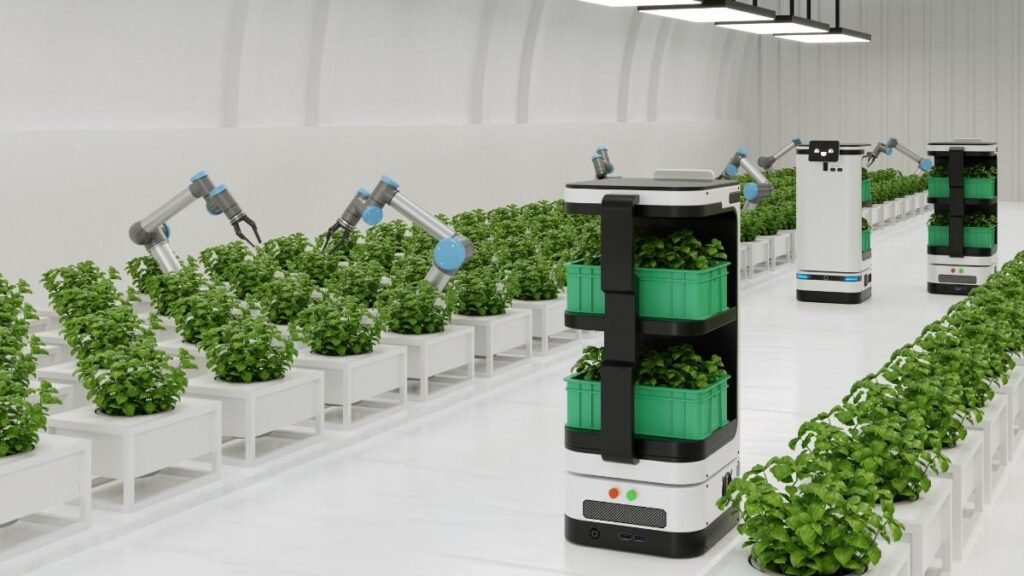
A range of robotic devices intended to carry out agricultural operations are collectively referred to as agricultural robotics. These robots can function independently or semi-autonomously due to their advanced sensors, artificial intelligence (AI), and machine learning algorithms.
Beyond basic automation, robots play a bigger role in farming by integrating cutting-edge technology to maximize farming operations.
1. Precision Agriculture
Among the primary areas where agricultural robots have had a big influence is precision agriculture. To improve crop output and resource management, this method uses tools that are based on data.
Precision agriculture relies largely on robotics because it allows farmers to gather data in real-time on crop health, soil conditions, and environmental factors.
Using this information, decisions regarding planting, fertilizing, irrigating, and harvesting may be made with more knowledge, resulting in a more economical use of resources and a smaller negative influence on the environment.
Example: High-resolution photos of crops may be taken by drones fitted with multispectral cameras, which enables farmers to keep an eye on plant health and identify problems like insect infestations or nutrient shortages early on. It is then possible to use robots on the ground to put down exact amounts of fertilizer or pesticides only where they are needed. This cuts down on chemical use and waste.
2. Automated Planting and Harvesting
In the agricultural sector, labor shortages have long been a problem, especially in areas where cultivation is labor-intensive. One option is provided by agricultural robots, which automate labor-intensive operations like planting and harvesting.
Because of their high level of accuracy and efficiency in their activities, these robots help to increase production by decreasing the need for manual labor.
Example: With the help of robotic planters, farmers can ensure ideal crop development by precisely spacing and planting seeds. Similarly, picking robots can pick fruits and veggies with little damage, which raises the quality of the food and lowers the amount that is wasted after it is picked.
3. Crop Monitoring and Management
Keeping an eye on the health of crops and getting rid of pests and diseases are important parts of farming. Traditionally, these tasks took a lot of time and work, and they were often done by hand, with checks and treatments.
Crop monitoring and management have been transformed by agricultural robots because they offer real-time data and allow for focused actions.
Example: Robots with sensors and AI algorithms installed may search fields and spot stress indicators like altered leaf color or growth patterns. By limiting the application of remedies to only the afflicted regions, these robots can lower the total amount of pesticides used while increasing crop output.
Types of Agricultural Robots
Agricultural robotics is a broad area that includes many different kinds of robots used to tackle certain farming problems. The following are a few of the most popular kinds of farming robots and their uses:
1. Drones: Aerial Surveying and Monitoring
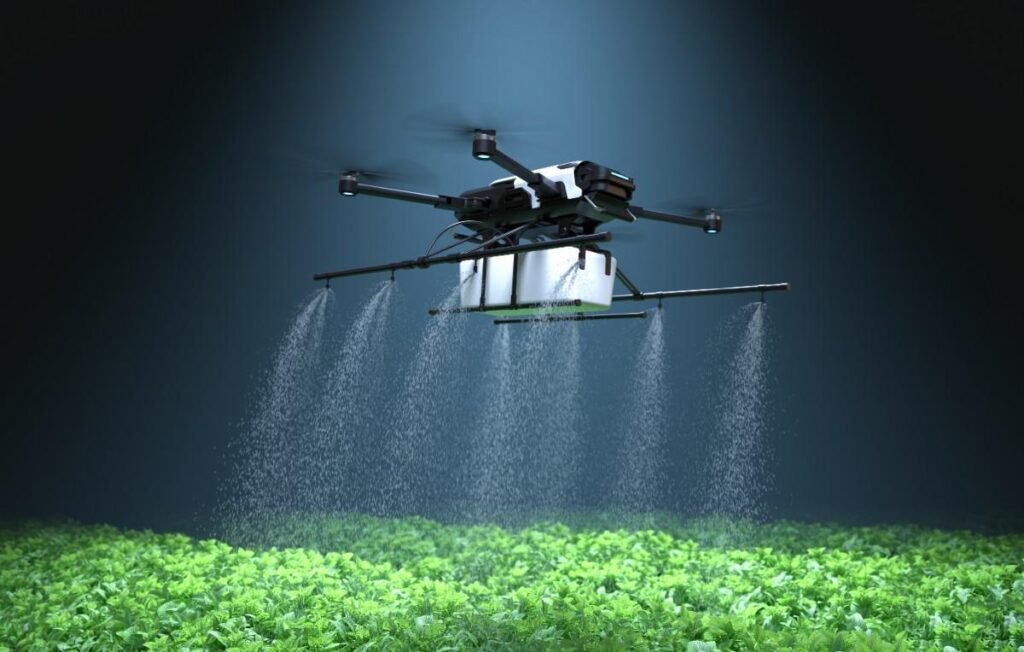
Drones, which are also called robotic aerial vehicles (UAVs), are now an important part of farming. These flying robots can collect precise photographs and data from above due to the cameras and sensors they are outfitted with.
Drones are frequently utilized for applications including precision spraying, soil analysis, and crop monitoring.
Key Benefits:
- Aerial Surveillance: Drones provide a bird’s-eye view of large fields, enabling farmers to monitor crop health, assess damage, and plan interventions.
- Precision Spraying: Drones can apply fertilizers and pesticides with high precision, reducing waste and minimizing environmental impact.
- Soil Mapping: Drones equipped with multispectral cameras can create detailed maps of soil conditions, helping farmers optimize irrigation and fertilization.
2. Autonomous Tractors: Revolutionizing Field Operations

A major advancement in agricultural robotics, autonomous tractors are made to carry out a variety of field activities without the need for human assistance.
With GPS, sensors, and AI systems built in, these machines can move around fields, plant seeds, and till the soil on their own.
Key Benefits:
- Reduced Labor Costs: Autonomous tractors reduce the need for manual labor, particularly during planting and harvesting seasons.
- Precision Farming: These tractors can operate with high precision, ensuring consistent planting depths, spacing, and soil preparation.
- Increased Efficiency: Autonomous tractors can work around the clock, increasing the efficiency and speed of field operations.
3. Harvesting Robots: Precision in Picking
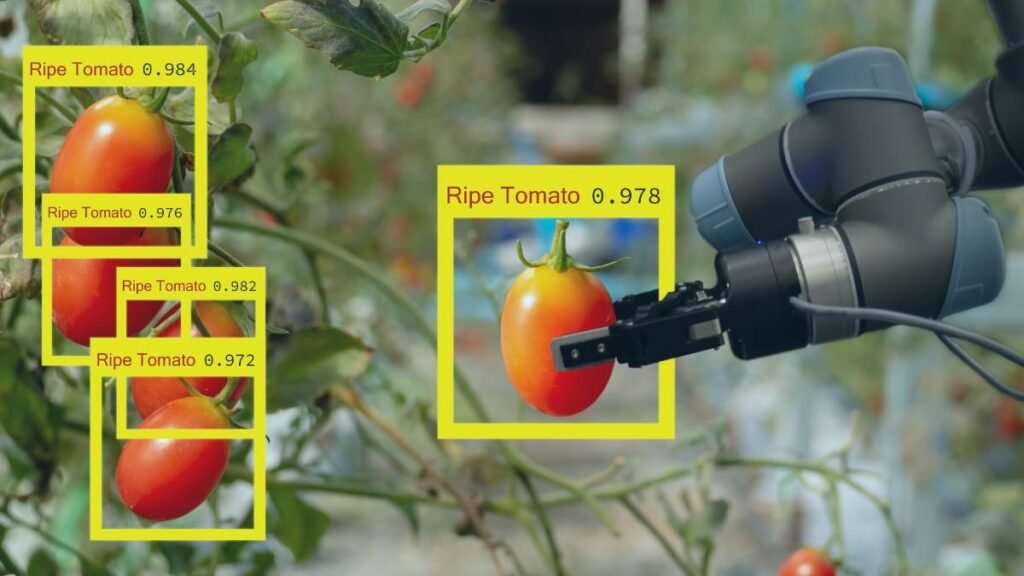
Farming tasks that take a lot of work include harvesting, especially fruits and veggies that need to be handled carefully. Precision crop-picking by harvesting robots ensures less harm to crops and raises the quality of the production.
Key Benefits:
- Reduced Labor Dependency: Harvesting robots can work continuously, reducing the reliance on seasonal labor.
- Improved Quality: These robots are designed to handle delicate crops gently, minimizing damage and post-harvest losses.
- Cost Savings: By reducing labor costs and improving yield quality, harvesting robots can lead to significant cost savings for farmers.
The Benefits of Agricultural Robotics

Adopting robots in farming has many benefits, such as increasing production and protecting the environment. The following are a few of the main benefits of farming robots:
1. Increased Efficiency and Productivity
Compared to people, farming robots can do jobs quickly and correctly, increasing production and efficiency.
These robots allow farmers to concentrate on other facets of farm management by automating labor-intensive chores, which eventually increases yields and profitability.
2. Cost Savings
Agricultural robotics can have a substantial upfront cost, but there are significant long-term cost savings.
Robotics in agriculture has the potential to save farmers a large amount of money by eliminating the need for physical work, improving the use of resources, and decreasing losses after harvest.
3. Environmental Sustainability
Agricultural robotics helps protect the environment by encouraging more precise growing methods. Utilizing data-driven tools, farmers may minimize the environmental effects of their farming operations by using less water, fertilizer, and pesticides.
Example: Precision farming using robotics reduces waste and conserves natural resources by applying water and fertilizers precisely.
4. Improved Crop Quality and Yield
Agricultural robots are made to be very accurate at what they do, making sure that crops are placed, watched over, and gathered in the best way possible. This leads to improved crop quality, reduced post-harvest losses, and higher yields.
Challenges and Future Prospects of Agricultural Robotics
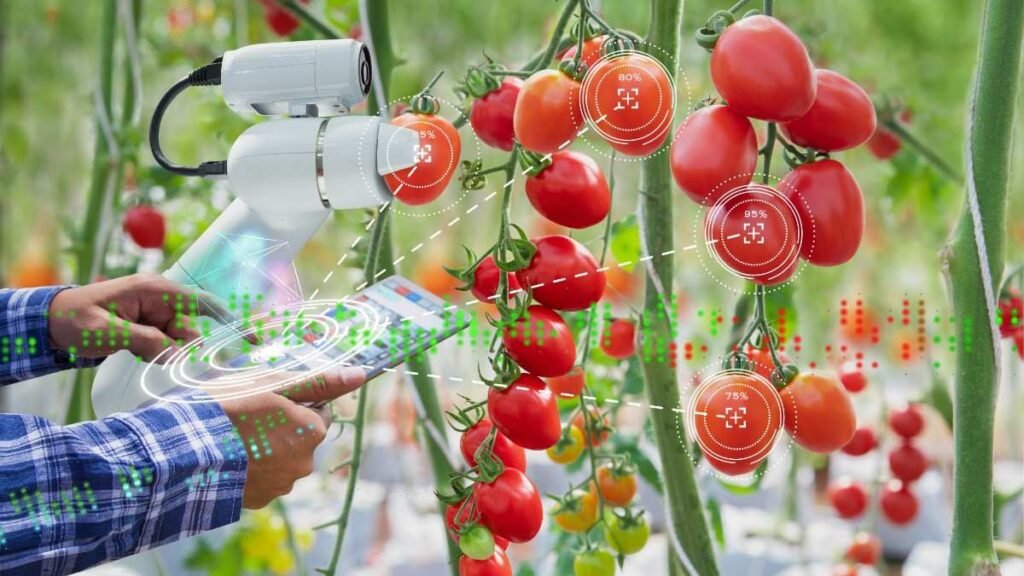
It is clear that agriculture robotics has a lot of benefits, but there are also some problems that need to be fixed before they can be widely used.
1. High Initial Costs
For small and medium-sized farms, the expense of purchasing and maintaining agricultural robots may be unaffordable. Even though there are considerable long-term cost benefits, many farmers still find the upfront expenses to be a barrier.
2. Technical Expertise
Some areas may not have easy access to the technological know-how needed to operate and maintain agricultural robots. To properly employ this technology, farmers must receive training, which may be an expensive and time-consuming procedure.
3. Integration with Existing Systems
It can be difficult to integrate farming robots with traditional farming methods and systems. Optimizing these technologies’ benefits requires ensuring compatibility and smooth functioning.
Future Prospects:
- Advancements in AI and Machine Learning: As AI and machine learning technologies continue to evolve, agricultural robots will become more intelligent and capable of performing complex tasks autonomously.
- Reduced Costs: As the demand for agricultural robotics grows, economies of scale are expected to reduce the costs of these technologies, making them more accessible to farmers of all sizes.
- Increased Adoption: With continued innovation and support from governments and industry stakeholders, the adoption of agricultural robotics is expected to increase, leading to more sustainable and efficient farming practices globally.
Conclusion
Agricultural robots have outstanding potential for farming in the future, providing a clever, effective, and long-lasting response to the problems confronting the agricultural industry. Robotics in farming is changing the way we produce food, from automated harvesting to precision agriculture.
This ensures that we can fulfill the increasing worldwide need for food while reducing our impact on the environment.
Agricultural robotics adoption is expected to pick up speed as technology develops, opening doors for farmers across the world to have more sustainable and lucrative farming practices.

